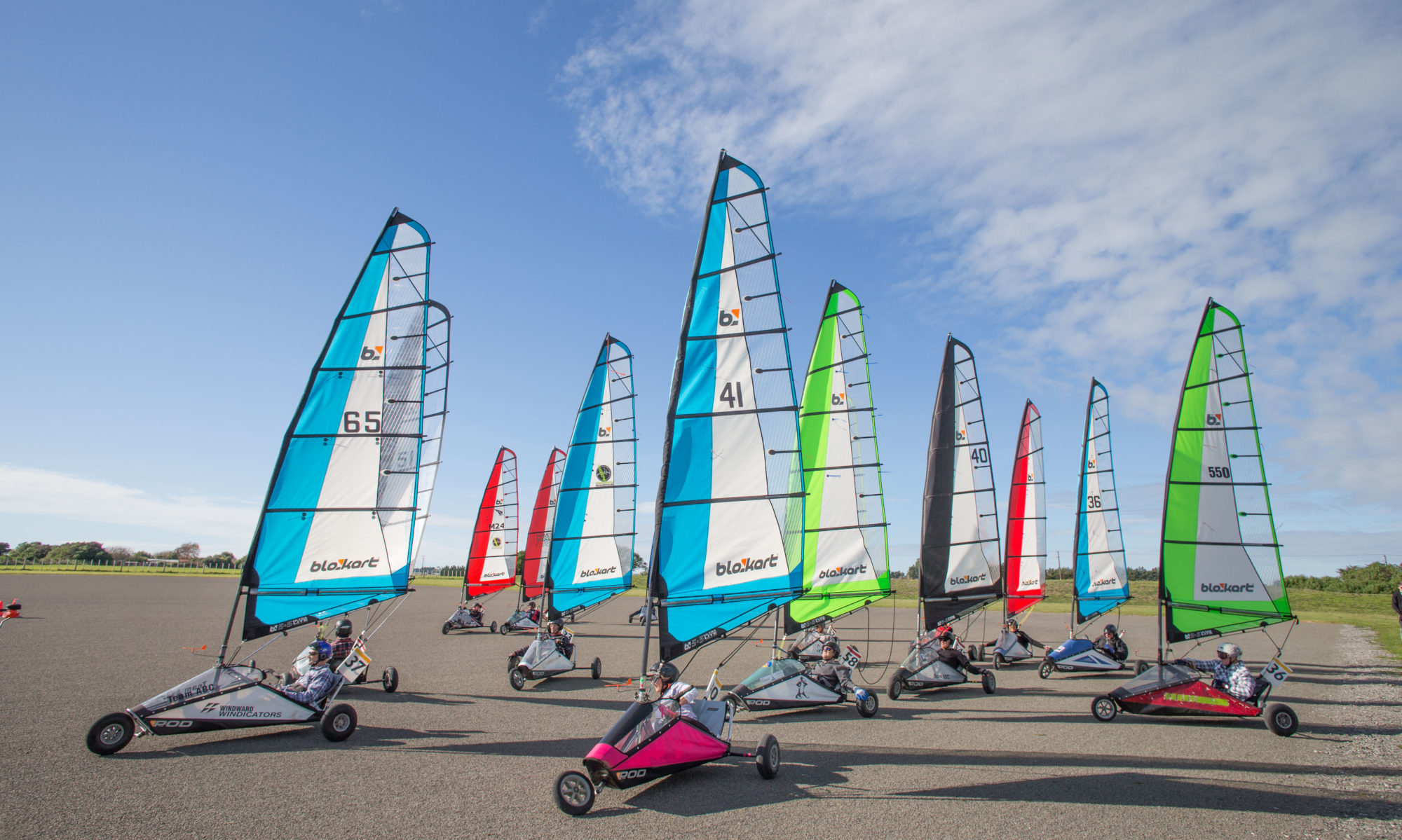recommended skill level for this guide advanced
The principle of tuning is rather simple, but since there are so many variables it will always stay an art, rather than science. Science, like the theory presented here, might help you further develop the art. Look at it as a school of arts!
For optimal sail tuning you need to deflect as much air as possible aft. To do this, take as much curvature as possible and make your leech directed aft, parallel with the centreline. But watch out for the following:
- Flow separation (stall). Stall can be detected by the telltales on the trailing edge going to leeward. This can be caused by:
- Too much sheet tension
- Somewhere the curvature is too much for the air to follow
- The luff may not backwind. This can be caused by:
- Not enough sheet tension, the wind is than simply blowing in the wrong side of the luff
- The angle of attack is too much for the luff
- The telltales should point aft over the full height of the sail. If this is not happening this can be caused by:
- If only the upper telltales are going to leeward – Not enough twist
- If only the lower telltales are going to leeward – Too much twist
- That you still sail the blokart®, and not the other way around. If you are over powered you are deflecting too much wind, so you have to:
- Ease the sail a little, then you are deflecting the wind less, (and your luff might backwind, so you need less curvature)
- Give more twist, then the upper part of the sail has less force, (and the upper part also delivers the most heeling moment because it is higher
- Use a smaller rig, resulting in simply less force, as the upper part of the sail that gives the most heeling moment is simply not there!
illustrated glossary of some of the words to describe the sail profile
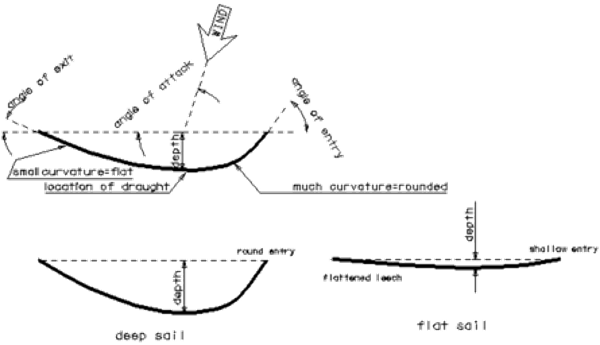
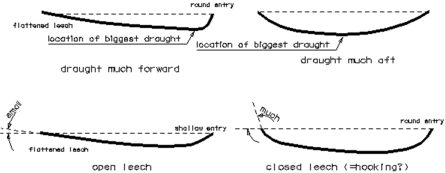
twist
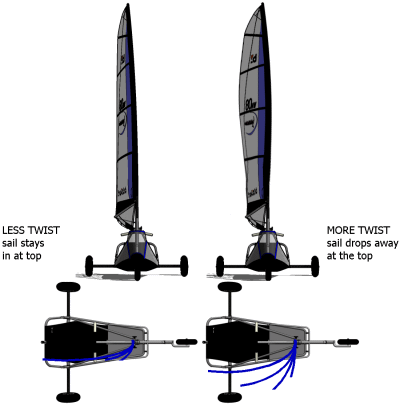
The higher above ground, the more wind there is. Because of the difference in this apparent and true wind speed the wind from higher up will come more from the true wind direction than below.
When heeling, twist also influences the flow in another way. For high twist and high heeling the wind will be deflected less, and the sail seems flatter from the winds point of view.
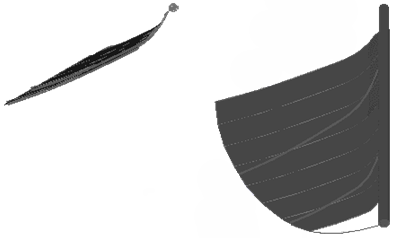
Now the same, but now with some twist:

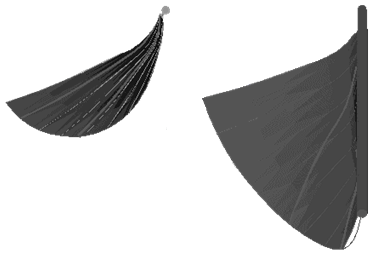
When is the twist right?
- If all telltales on the trailing edge are directed aft.
- If you do not have telltales (which you should) another good indication is that the luff starts back-winding from top to bottom if you let out your main sheet just a little.
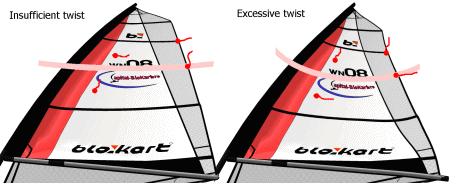
sail tuning for sailing on the wind (close hauled)
speed vs height
When sailing close hauled you want to go as fast as possible up wind.
Most sailors have the tendency to have the sail sheeted too tight, so with the leech curling somewhat to windward, causing excessive drag. Flattening your sail is the solution if you want to go closer to the wind. Of course you will loose speed with a flattened sail, but you will sail a shorter distance.
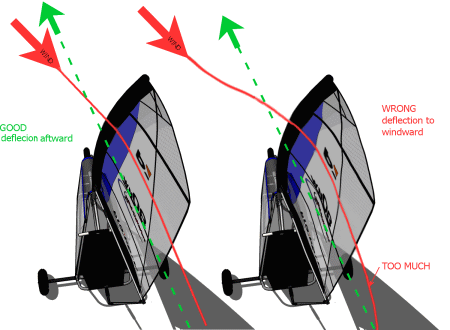
Often it is not possible to flatten the sail. Easing the main sheet to induce some more twist will help if that is the case.
Please note on above picture the deflection of the air before it has reached the sail.
This is called “upwash”, which was coined from its effect on an plane wing. (see image to right)

Often it helps to make the point of maximal curvature a little more forward as it helps flattening the leech.
sail tuning for sailing off the wind
In light breezes, when sailing downwind, your angle of attack has no importance, so you need as much curvature as you can get, or you can handle.
As the breeze increases you will need to reduce the curvature as the apparent wind direction induced by your increasing speed will result in you sailing on the wind regardless of direction.
